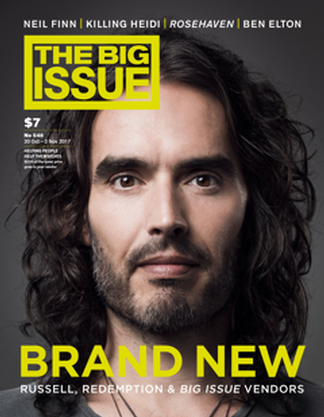ANALYSING SHELTER'S ADVERTISMENT
How have they represented their agenda within this campaign?
In this advertisement by Shelter, a homelessness charity, a strong message is given to the audience. This is delivered by the use of three separate images, each representing an individuals story on homelessness. This layout, with text and the charities logo on each separate image, allows the advertisement to be used in multiple ways. For example it could fill a billboard as it is shown above, using three images with three different stories to make a much larger impact on the audience. Or each segment of the advertisement could be used separately, for example in a tube station. By using such a layout, Shelter is increasing the likelihood of their advertisement being shown, therefore increasing awareness.
Similarly, the font used helps to continue on the theme of awareness though also helping to add depth into the advertisement. The use of a slightly translucent fade of red makes the text readable though slightly concealed. This may be referencing how the issues with homelessness are being overlooked and hidden away from society; hence by using this style of font where the text tells the stories of individuals it makes reality seem more hard-hitting for the audience.
The whole aim of this campaign is to raise awareness for the issues surrounding homelessness, therefore the images used within the advertisement need to seem real, raw almost. Therefore the charities use of images where the close-up shots show only peoples faces creates a closeness to the audience. This use of just individuals faces within the images allow them to be perceived as regular people; rather than those who are homeless, as their surroundings or clothing aren't visible. This also links to the stereotypes connected to homeless people, and how many automatically dehumanise and judge, taking away their humanity. Therefore the aim of this campaign is to help stop the demoralisation of homeless people, and helping to aid their lives by giving to the charity.
The three images used within the campaign, show three individuals, all with the text shown over the top of their faces. This may be referencing how their problems are hidden away from society; with the advert giving the audience a physical representation of this. One main factor which makes these images so affective is the facial expressions of the people. They are all exactly the same, with each of the three people showing no emotion. Even though each image shows very little emotion, with straight mouths, lying naturally; their eyes connect with the audience as soon as glancing at the advert. The charity has presented these people as if they are homeless, possibly even using real homeless individuals. The look in their eyes suggests of someone who is in need, calling out for help; this is also emphasised by the people looking directly into the camera lens. Therefore, for the audience, it seems that they are asking for help directly to individuals looking at the advertisement.
As well as the people shown within the images, the lighting also helps to create the same look of desperation on the peoples expressions. For instance, the lighting is straight on to the image, casting no shadows on one side. The technique of using side-lighting is often used on advertisements where the image or product is wanted to be seen as attractive. However in this campaign by the charity Shelter, the opposite approach has been taken. The lighting has been used minimally, therefore helping to cast small areas of darkness around their eyes and under their chin. This makes the people seem tired; again linking into the context of the issues surrounding homelessness.
The background to the peoples faces is minimal, due to how close-up the images are. Though the campaign has used the minimal lighting to produce a darker background, merging their hair into blackness behind them. This creates a very effective overall aesthetic, making the campaign dark; the colour black giving connotations of emptiness the night, possibly linking to how many homeless people sleep with no shelter, with nothing. The use of this background may also be referring to their past experiences, though with the help of the charity, Shelter, the individuals can walk away from the darkness in their past lives.
The text which is used in this charity campaign is directed at the audience, just as the images looked directly at the camera. The text shown on the left-hand-side of the advert, reads: 'BUT WHERE WILL WE LIVE?'. This is a very raw but simple statement, and even though it is not shown in speech marks, the audience automatically link it to the women's image shown behind. The most powerful part of this statement, is the use of the conjunction 'but' at the beginning. This makes it clear that the people who say this are having to argue with someone. For instance, many are made homeless by not being able to afford their rent, therefore they are made to leave their home, with the landlords knowing what will become of their situation. The advertisement links to this idea, as in a smaller font at the bottom of the image it reads: 'Losing your job doesn't have to mean losing your home. We can help.' Here, the campaign refers directly to those affected by the issues within homelessness, aiming it at those affected rather than those who could help. This phrase is repeated after every piece of text, helping to reinforce the fact that the homeless are not alone and that help from charities like Shelter is available.
This is not a traditional advertisement for issues surrounding homelessness, and this is the factor which makes it so affective. Every element which is used within this campaign has been thoroughly analysed, making sure that when put together they present the wanted overall aesthetic and meaning.


Comments
Post a Comment